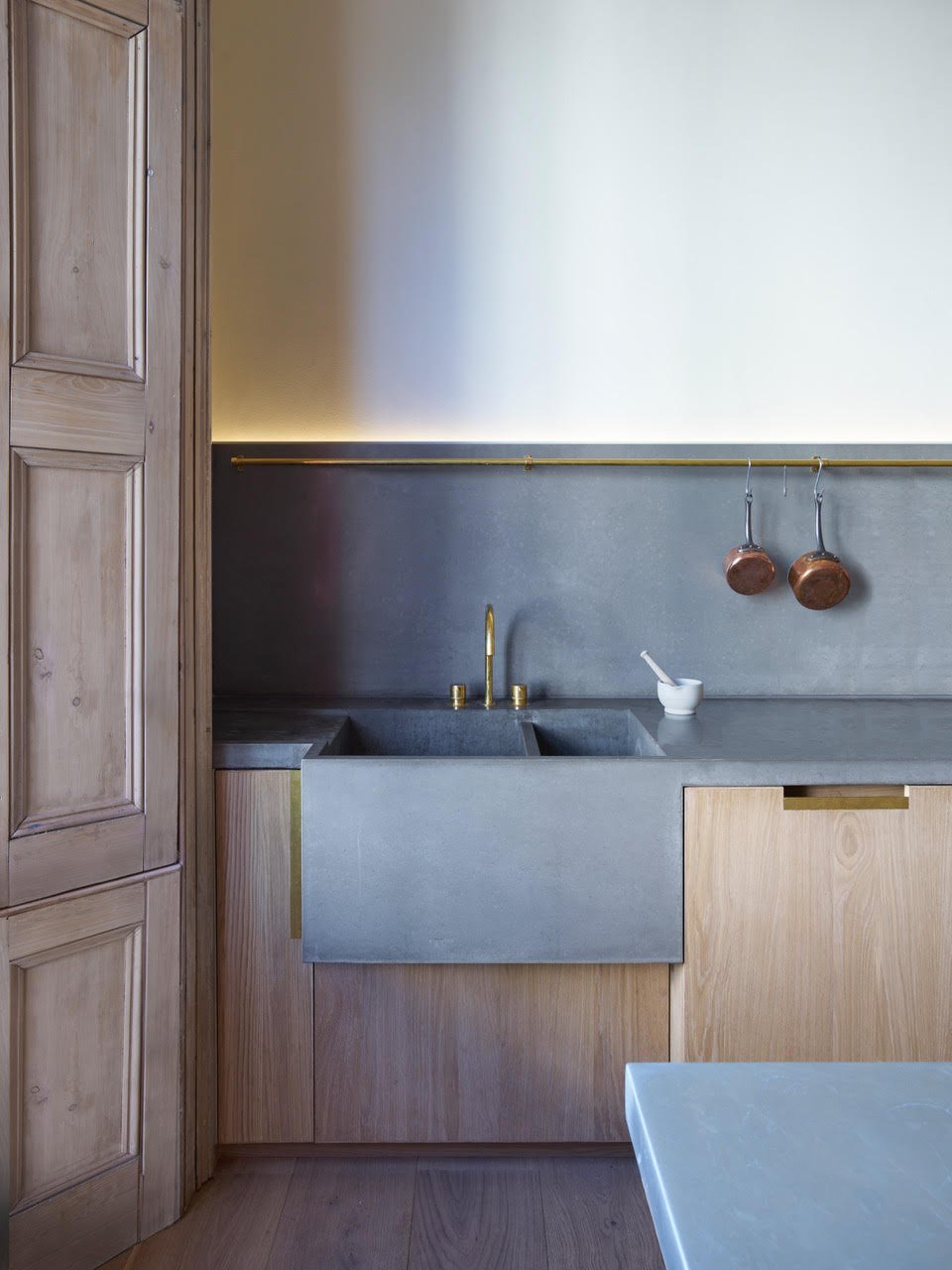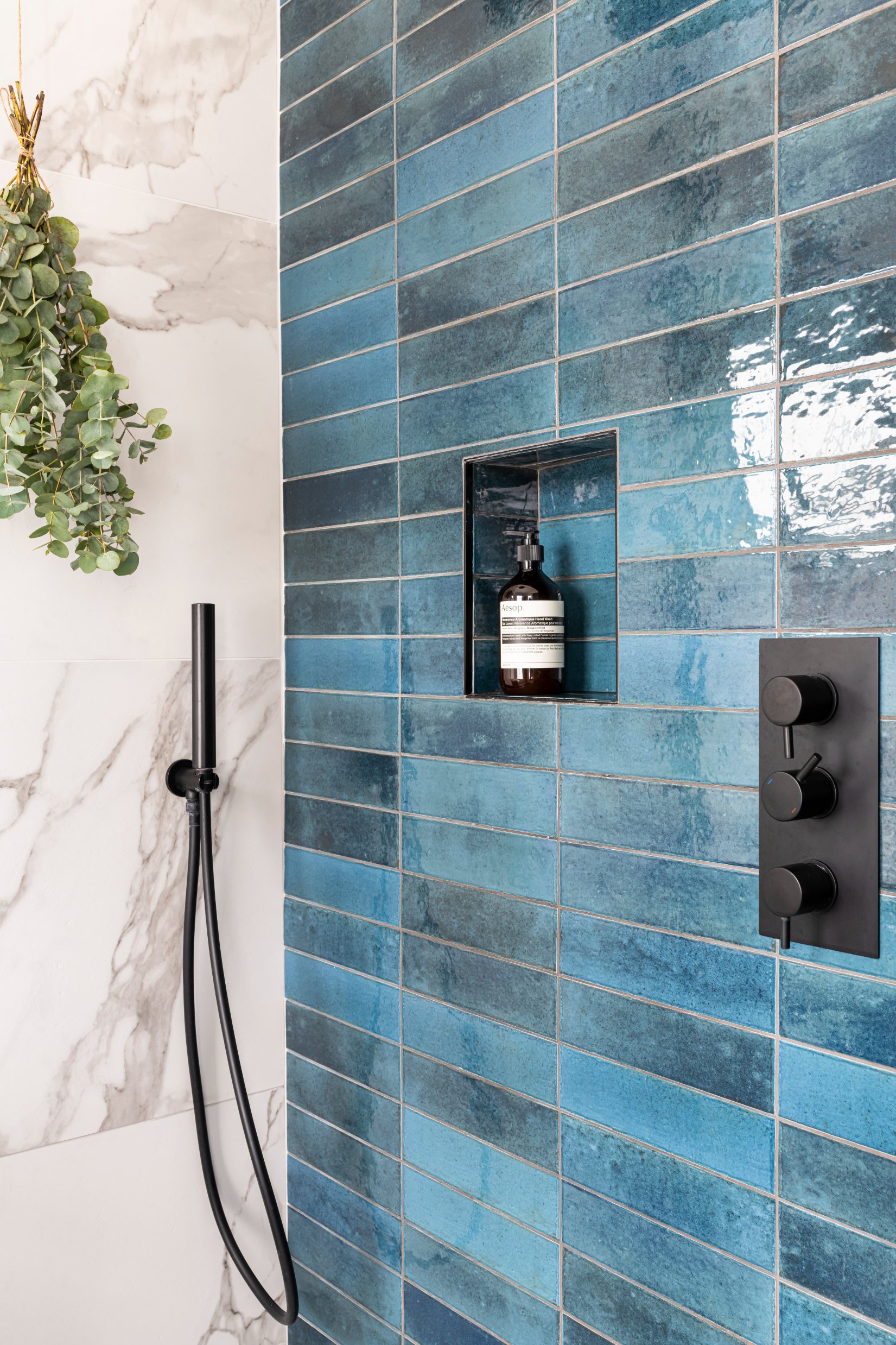How to plan a kitchen, part 2: flooring & worktops
In the first part of my how to plan a kitchen series, I shared the most important things to consider when planning your kitchen layout. Once you’ve got the layout nailed, it’s time to consider your flooring and worktops.
The right materials for you will depend on your taste, needs and lifestyle, but here are the practical considerations when choosing flooring and worktops.
Flooring
Flooring in a kitchen needs to withstand wear and tear, probably the most out of any other room in the home. It needs to be water resistant, stain resistant and it needs to withstand temperature fluctuations.
Stone
Real stone, like slate or granite, are a good choices for a kitchen floor; very hardwearing and beautifully textured. But because real stone is porous, it will need sealing to prevent staining.
The more porous the stone the more high maintenance it is; so if you want the look of real stone but don’t want to be regularly cleaning and sealing, then I would stay away from more porous stone like limestone, and opt for slate or granite instead.
Stone floor, from Floors of Stone
Tiles
One of the most hardwearing of all the kitchen floor options (aside from concrete), porcelain tiles are very hardwearing and are an excellent choice, so are ceramic tiles which are less hard but have a softer surface.
These tiles are made from clay and are then printed with patterns and colours and then glazed, meaning that you have a wide choice of styles and effects when you opt for a porcelain or ceramic tiled floor.
Porcelain terrazzo floor tiles from Mandarin Stone, kitchen designed by Sustainable Kitchens
Wood
Wood is a classic choice for a kitchen floor, especially if you have wooden floors throughout your home and you want them to flow seamlessly into your kitchen. However, the downside to using wood in your kitchen is that wood warps when wet - not ideal for an area where you might get leaks and spills.
If you’re keen on a wooden floor for your kitchen, go for engineered wood which is more hard wearing. Real wood floors, although beautiful, are more susceptible to dents and warping.
Concrete
Polished concrete is a low-maintenance, extremely durable and hard-wearing choice for kitchen flooring. When properly installed and sealed, it is virtually impermeable and impossible to stain.
Concrete is a great choice in minimalist and industrial style homes but can also work with most other design styles. However - one downside is that it doesn’t retain heat so can feel quite cold underfoot, although it can be installed with underfloor heating.
Polished concrete floor, by architect Amrish Mharaj via Contemporist
Worktops
Similar to flooring, the worktops in your kitchen need to work hard; be resistant to staining, temperature fluctuations as well as hard-wearing.
Granite
Organic and unique, granite is a beautiful choice for worktops. Since granite is a natural stone, as per before, it is strong and durable but requires sealing to avoid staining. If it isn’t regularly sealed, you’ll find your granite worktop will absorb anything that’s spilled onto it.
Quartz
Quartz worktops are made from a man-made material; containing the natural mineral quartz mixed with hardening materials like resins and pigments.
The result is an extremely hard, non-porous and virtually indestructible surface. If you like the look of marble, marbled quartz can bring you the look at a lower price point and with all the benefits of the material.
Marble
Marble is a hugely popular material and for good reason; it is absolutely stunning, eye-catching, with veining in a variety of colours and shades to match your interior.
Marble is a porous material and stains very easily, so if you’re going for a real marble worktop you need to be committed to maintaining it and sealing it regularly to avoid ruining it with stains.
Carrara marble worktop, from Devol Kitchens
Real wood
A good style choice for classic and country style kitchens, real wood brings a natural and rustic look to a kitchen.
But - they are high maintenance, just like other natural choices, and aren’t as durable as other, harder materials. Because wood is relatively soft, solid wood counter tops are more likely to scratch and dent. If not sealed properly, it can become water damaged or stained.
Sold walnut worktop, from Worktop Express
Laminate
The most budget friendly kitchen worktop is laminate; made from wooden particle board and laminated in a hard plastic material. Laminate can be printed in any design; offering you a range of colours and patterns.
If you like the look of marble or wood, marble and wood effect laminate is a budget friendly choice - whilst it might not look or feel exactly like the real deal it will at least bring the aesthetic to your kitchen.
Laminate worktop, from Ikea
Stainless steel & concrete
And finally - less commonly used materials like stainless steel and concrete can be used to make a real design statement. Stainless steel is completely non-porous and hardwearing, as is concrete when sealed properly.
If you’d like my help with your next project, check out my services to see how we can work together. If you’ve enjoyed this blog, don’t forget to subscribe below to receive my new post in your inbox every Sunday.
Images from unsplash except when credited elsewhere.
















